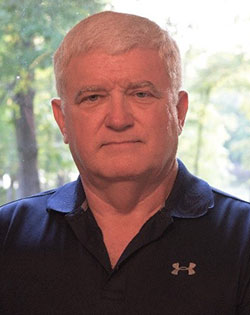
| Archive | Subscribe | Printer-Friendly Version | Advertise | tappi.org | TAPPI Press Catalog | November 2021 |
As the Year Closes
New American National Standards (ANSI)
Have Been Approved!
Don't miss the chance to vote on reviews! Click here to join any
Standard-Specific Interest Group (SSIG)
|
New or Revised Standards, TIPs, and Useful Methods
The following TAPPI Standards have been approved as American National Standards by the ANSI Board of Standards Review: New American National Standards: Approved reaffirmation of current American National Standards: Approved revision of current American National Standards: Notices of the approvals of the TAPPI Standards as American National Standards were placed in the November, 5 2021 edition of ANSI Standards Action. STAR of the Month
The Minds of TAPPI's StandardsDave Carlson's Words of Wisdom: After 56 years in the Corrugated Containers industry (and counting), I still enjoy it. Just like the famous Mark Twain quote, “find a job you enjoy doing, and you will never have to work a day in your life.” My father certainly passed down his work ethic mindset. If you don’t envision your goals, you’ll lose focus. You always need a plan! Knowing what you want to do in the next few years will help you wake up in the morning and charge ahead.
Is there any particular review that has impacted you? Please tell us about your experience. I’ll share one that shows the folly of youth and why we need new ideas. Sometimes you must accept the fact that your ideas won’t be accepted by the rest of the group. It involves the MIT Folding Endurance Test; I was involved with that very early on. The result of the testing in laboratories can be very erratic because of the nature of the test. It lacks consistency both in the laboratory or in between laboratories. Being a young person with bright ideas and full of new ways of looking at things, I looked at the variation there and decided it would be much better if we reported the results as the law of arrhythmic value of the folding endurance; especially for samples that were above a certain value. However, when you do that it becomes a very nice linear test where you’re able to make the results that come from that testing process look a whole lot more conventional to those technicians. It turns out that no one shared the view that it would be a good idea to move that test for the sole reason of making the statistics. There were certainly things like existing SOPs, existing methods, existing specifications, and government requirements that did not enter my young brain at that point. This is a situation where I brought a new idea to the table and I was told that it’s probably not the right direction for the industry to proceed. It was a learning experience because it showed the value of looking at things from many different viewpoints and not strictly a technical viewpoint (If you must make the method comprehensible to the actual users). It’s a lesson I carried with me. TAPPI Methods are wonderful. They are very specific; and they give you a single answer, but we don’t want to overwhelm the audience with technical jargons and requirements that aren’t essential to the method.
What has been your experience serving as a board member of the TAPPI Lake States / North Central PIMA Local Section? I’ve been a board member of the TAPPI Lake States Local Section for the last 11 years. We organize technical sessions and other activities. For example, we conduct the Energy Forum every fall and a maintenance conference or other type of technical meeting every spring. Due to the pandemic, we have had virtual sessions as opposed to in-person sessions. TAPPI Lake States Local Section also organizes golf outings and clay shoots in Wisconsin, Minnesota, and soon in Michigan. The purpose of our local meetings is to provide learning and networking opportunities for mill people who don’t get a chance to go to TAPPICon in Atlanta or other big cities. They can easily attend local events, since those are usually within a driving distance from their mill. We cover innovations, energy, maintenance, grade conversions, process controls, safety and other practical issues that mill people are interested in. We want to provide an environment for mill people to learn from other experts. Another purpose for the TAPPI Lake States Local Section is to raise money and invest for the purpose of providing scholarships to paper science and engineering students at local universities. For example, we provide scholarships to the University of Wisconsin (Stevens Point), which has a combined Paper Science and Chemical Engineering program. Also, to the University of Minnesota, which has a bioengineering program that involves some aspects of papermaking, plus to Western Michigan University and Fox Valley Technical College. Basically, just about all our funds will eventually go into scholarships.
What do you think would be a good way for the industry to recruit new talent? From the industry perspective, there’s always this stigma of manufacturing. First, you must overcome that. The headlines of mills closing is always a problem. Most people don’t understand that the overall industry is very successful and in demand. Tissue, liner, and specialty paper are very stable, and in many cases growing. What people hear is that printing and writing mills are going away. What they don’t necessarily hear about are mills like the one in Rumford, Maine. The Rumford mill last year was 100% printing and writing; this year it may not even be 50% printing and writing anymore, but it’s still running. There’s a misconception about the future of the industry and that paper is going away, but most people don’t understand that printing and writing paper is a relatively small portion of the industry. Though it may continue to shrink, the rest of the pulp and paper industry is significantly stable Most people I work with love outdoor activities and most paper mills are in smaller communities. If there was a way to increase the work force, I would focus my efforts on recruiting in small communities where the general public is prone to hunting and fishing, rather than big cities. Most of the jobs aren’t in cities. “It’s about the people you meet. I can’t tell you how many times I reached out to someone I met at a conference and ended up collaborating with them” – Don Guay, Ph.D.
What would you tell industry colleagues, whether they be box makers, suppliers to our industry or box users that have never participated in Standard activities? It depends on who you are talking with. Some may not understand the need to have uniform methodologies of measuring characteristics used in our industry. For example, when using raw materials, you want to make sure they’re correct. For suppliers, you can explain that this is what the industry uses, and there are recognized test methods to follow to assure compliance with requirements. You almost have the same message for your senior leadership. They may question the process and ask, “Why are we doing this? Why do we have a lab?” The answer is we need to have well-equipped and staffed labs, in-house, following recognized standard test methods to demonstrate to our customers that we are meeting/exceeding their specifications. The industry’s test methods have evolved over time to allow you to do that. You are now less likely to be taken advantage of by someone trying to “cook the books.” For example, if someone says they are measuring Box Compression or ECT while using Standards, all you need is a lab and access to TAPPI Standards T 804 Compression test of fiberboard shipping containers and T 826 Short span compressive strength of containerboard to proceed. Does working with Standards give you a sense of fulfillment? There’s a sense of satisfaction when working on a project and bringing it to fruition. You can look back and say, “I worked with a certain team to accomplish development of a new Standard, or we found a different way of measuring an existing characteristic”. There’s a real sense of accomplishment and pride in working towards a goal. The different people one encounters when working on different committees become an accessible list of people to call when in need of opinions for your company.
Why do you think Standards are important? How have you used them in your field? Consistency! I’m the keeper of the specs at Pratt Industries. The consistency across the mills is important. I have used Standards to set production specifications. In fact, those specifications are based on Standard Test Methods. Without them we can’t condition or re-condition certain properties. We have also used Standards to deal with complaints in terms of measurements. Often, a customer will run a test under an air conditioner, which is not a lab environment. So, you can’t really consider those types of results relevant to the test. What has been your experience serving as Secretary, then, Chair of the Fiberboard Shipping Container Testing Committee (FISCOTEC)? I assumed the secretary position in FISCOTEC because I was uncomfortable with my understanding of the Standards process. I stepped out of my comfort zone to develop a better understanding and to be more comfortable with it. I eventually grew into the position and became Chair of FISCOTEC.
Is there any particular review that has impacted you? Please tell us about your experience. Five or six years ago I worked on a Standard related to the brightness of pigments. I was involved in the pigment industry for most of my career. The measurement of brightness is very important and it’s something that all our customers paid attention to. It was a Standard we paid attention to in terms of quality and control of our products. The Working Group Chair had resigned, and I was asked to fill the void. I found out that it was more than a technical review. Although there were technical corrections to be made, the negotiating process with others showcased how important this Standard was to the industry. There were folks who were just looking at it from a technical standpoint and wanted to replace the TAPPI Standard with an ISO Standard, which would have been a total change for the entire industry in terms of how they looked at pigments and how they measured the brightness of pigments. I found it very impactful learning that there’s more to Standards than the technicalities of Standards.
What would you tell people that have never participated in ISO TC6 activities? You are part of a team! The US TAG group represents the interests of the United States from a global expert standpoint. I joke with our participants and call them Team USA. The physical representatives at the last TC6 meeting were Jeff Lundeen, Dave Loebker and me. Occasionally, we would start chanting “USA, USA, USA!” and joke about representing the US. It was fun and lighthearted. There is structure in the process, and we are always looking for people with expertise, but also people who want to learn and contribute. You have the opportunity to touch on many areas, since every member has the option to review balloted votes. Recommended votes go through the entire TAG, and everyone has the chance to participate or learn from those ballots. Participation level is guided by what a voter can do or wants to do. We have a group of 37 experts on the team, as opposed to 1-3 people in some other countries’ teams. My goal is to continue to expand because there’s a vast amount of learning opportunities. Interviews conducted/ written by Souadou Camara Special thanks to Editor in Chief: Janet LoBue Thank you all for your contribution to TAPPI! If you would like to share your experience with Standards, TIPs or U.S. TAG to ISO TC 6, please write to standards@tappi.org and the TAPPI Standards team will be happy to interview you. TAPPI Standards in Ballot
Listed below are TAPPI Standards that have recently gone out for ballot to the corresponding Standard-Specific Interest Group (SSIG). The date in parentheses is the closing date for voting. The TAPPI Standards regulations require public review of standards that are up for ballot. Send a message to standards@tappi.org if you want to request a copy of the draft in ballot. If you would like to participate on any SSIGs to review and vote on Standards, please click here or contact standards@tappi.org. SSIG Members Needed
The Standard-Specific Interest Groups (SSIGs) for the following Standards are in need of additional members. These groups may or may not have ballots currently open. All Standard-Specific Interest Groups (SSIG) require a minimum of 10 members in order to ballot and vote on a draft of a method. The following test methods do not have the required minimum number of members to initiate a ballot:
Alkaline Pulping T 692 om-13 Determination of suspended solids in kraft green and white liquors Draft 2 Current SSIG Count = 6
Chemical Properties
T 434 cm-10 Acid-soluble iron in paper Automatic review - 10/2019 Current SSIG Count = 9
T 493 cm-10 Identification and determination of melamine resin in paper Automatic review - 10/2019 Current SSIG Count = 9
T 600 om-15 Analysis of formaldehyde in aqueous solutions and of free formaldehyde in resins Automatic review - 10/2019 Current SSIG Count = 9
T 621 cm-10 Analysis of rosin Automatic review - 10/2019 Current SSIG Count = 9
T 628 cm-10 Analysis of rosin size Automatic review - 10/2019 Current SSIG Count = 9
Fillers and Pigments
Optical Properties T 1214 sp-17 Interrelation of reflectance, R0; reflectivity, R ; TAPPI opacity, C0.89; scattering, s;
T 1219 sp-17 Storage of paper samples for optical measurements and color matching
Sulfite and Semichemical Pulping
Participating in a SSIG is free and open to anyone interested. Join now! If no progress is made on balancing these SSIGs, then the respective methods may be considered for withdrawal at the next Q&SMC meeting. If you have an interest in becoming a member of either of these SSIGs please contact standards@tappi.org. or visit tappi.org/JoinStandards. Standards Coming Up For Review
The system for review and development of TAPPI Standards requires an announcement of review dates so that any interested TAPPI parties may access drafts, submit comments, and/or join a Standard-Specific Interest Group (SSIG) to cast an official vote. Listed below are the Standards that will be up for review in 2022. The date indicated is the target date on which the draft will be distributed to the SSIG for that particular Standard. Any interested individuals who wish to be part of the voting for any Standard should send a message to standards@tappi.org or sign up on the SSIG request page for voting membership on the corresponding SSIG prior to the target ballot date, if possible (SSIGs are listed under respective subject categories). Anyone who joins the SSIG before the target balloting date will receive a notice of the ballot. T 1210 sp-18 Units of measurement and conversion factor (April 2022) T 1216 sp-18 Indices for whiteness, yellowness, brightness, and luminous reflectance factor (April 2022) T 212 om-18 One percent sodium hydroxide solubility of wood and pulp (April 2022) T 232 cm-13 Fiber length of pulp by projection (April 2022) T 262 sp-18 Preparation of mechanical pulps for testing (April 2022) T 281 sp-18 Open drum washer mat sampling technique (April 2022) T 419 om-18 Starch in paper (April 2022) T 464 om-18 Water vapor transmission rate of paper and paperboard at high temperature and humidity (April 2022) T 495 cm-13 Bending number of paperboard (April 2022) T 530 om-18 Size test for paper by ink resistance (Hercules-type method) (April 2022) T 536 om-18 Resistance of paper to passage of air (high-pressure Gurley method) (April 2022) T 547 om-18 Air permeance of paper and paperboard (Sheffield method) (April 2022) T 579 om-18 Diffuse brightness of paper, paperboard and pulp (d/0) (ultraviolet level D65) (April 2022) T 1217 sp-18 Photometric linearity of optical properties instruments (October 2022) T 1218 sp-18 Calibration of reflectance standards for hemispherical geometry (October 2022) T 1500 gl-18 Optical measurements terminology (related to appearance evaluation of paper) (October 2022) T 1501 sg-18 Training standard for paper machine tender (October 2022) T 205 sp-18 Forming handsheets for physical tests of pulp (October 2022) T 266 om-18 Determination of sodium, calcium, copper, iron and manganese in pulp and paper by atomic absorption spectroscopy (October 2022) T 271 om-18 Fiber length of pulp and paper by automated optical analyzer using polarized light (October 2022) T 275 sp-18 Screening of pulp (Somerville-type equipment) (October 2022) T 491 om-18 Water immersion number of paperboard (October 2022) T 551 om-18 Thickness of paper and paperboard (soft platen method) (October 2022) T 568 om-18 Physical area of sub-visible contraries in pulp, paper and paperboard by image analysis (October 2022) T 218 sp-18 Forming handsheets for reflectance testing of pulp (Büchner funnel procedure) (October 2022) T 210 cm-13 Sampling and testing wood pulp shipments for moisture (November 2022) If you have joined a Standard Specific Interest Group (SSIG) for any Standard, you will receive a notice for ballot at the proper time with instructions for casting your vote and making your comments. If you wish to join a SSIG for a particular Standard, please go to the Subject Categories on the Standards page or contact the Standards Department at TAPPI (standards@tappi.org), or phone +1-770-209-7249 or fax +1-770-446-6947).
U.S. TAG to ISO TC 6
New member: Charles Romano has been added to the US TAG in the areas of ink, coatings and deinkability. He is a research scientist/engineer at Kodak in Rochester, NY. Todd Popson has been named Convenor of WG 3 (optical properties) for a 3-year term starting Jan. 2022. ISO TC 6 (pulp, paper and board) is investigating the need for certifications related to sustainability and the circular economy. Mary Kombolias is a US Expert to TG 2 (Identification of Organizations - Environmental issues) which is performing a mapping exercise looking at the various certifications, labels and bodies that already exist. This will be used to evaluate what role TC6 can play in this area as many issues surround recyclability and sustainability. Please contact Mary mkombolias@gmail.com to participate or comment on this work. If you would like to know more or join the U.S. TAG to ISO TC 6, please write to isotc6@tappi.org. M.Todd Popson General Announcements
Do You Have 20 Minutes to Shape the Industry? Gain Comprehensive Understanding of Test Methods with Minimal Time Commitment All TAPPI Standards have a Standard-Specific Interest Group (SSIG) made up of industry professionals who regularly review and vote on that Test Method. Each SSIG must have a minimum of 10 volunteers to conduct a valid review. Participation is easy. Volunteering 20 minutes or less can impact the industry and allow you to grow as an influencer by sharing your technical knowledge. “I started in the industry 40 years ago supervising various types of testing labs,” said Jeff Lundeen, Ph.D., retired senior research director of R&D at Georgia-Pacific's Neenah, Wis. Technical Center in a recent STAR Newsletter interview. “As I began, Standards were an excellent way to bring me up to speed on how the industry tested. It’s a great way to quickly increase your knowledge and meet other experts in the field to bounce ideas off of. Overall, I became interested in Standards as a path to assisting my career and acquiring knowledge.” There’s no better way to gain a comprehensive understanding of a test method and have input on how it works than by being part of a SSIG. Get involved now. Did You Know
... that to participate in the balloting process for TAPPI Standards you must sign up for the Standard-Specific Interest Groups (SSIGs)? Drafts are available for anyone... that to participate in the balloting process for TAPPI Standards you must sign up for the Standard-Specific Interest Groups (SSIGs)? Drafts are available for anyone to review, but to vote and comment you must be a member of the SSIG. Each Standard has its own SSIG – so you have to sign up for each Standard that you have an interest in. Links to all of the SSIGs (by subject category) can be found on the Subject Category for Standards web page. Visit tappi.org/JoinStandards to join now. Acronyms You May Need to Know
TIP = Technical Information Paper Q&SMC = Quality and Standards Management Committee SSIG = Standard-Specific Interest Group SARG = Standards Advisory Review Group WI = Work Item WG = Working Group WGC = Working Group Chair om = Official Method pm = Provisional Method sp = Standard Practice cm = Classical Method ss = Standard Specification sg = Standard Guideline gl = Standard Glossary wd = Withdrawn Standard UM = Useful Method Searching and Ordering TAPPI Standards, TIPs, and Useful Methods
Details on how to search and order TAPPI Standards, TIPs, and Useful Methods can be found on the TAPPI website’s Search and Order page. All individual TIPs or Standards are available for electronic or paper delivery. For electronic delivery, the documents are e-mailed in PDF format. Hard copy documents can be mailed or faxed, but shipping and handling costs will apply. For Individual TIPs, order Item Number: 0108____ (Insert TIP number) For Individual Standards, order Item Number: 0104T____ (Insert Standard number) For individual Useful Methods, order item number: 0104UM_____ (Insert UM number) List price: $49; TAPPI member price: $32. There are no shipping or handling charges for electronic documents. The TAPPI CD of Standards, TIPs, and UMs has been discontinued for 2021. An Individual or Company License for access to the continually updated collection of Standards, TIPs, and UMs via the web is the best way to always have a current set of documents accessible. A print-on-demand version of either the Standards, TIPs, or UMs, current and updated as of the date printed, is also available. For information and quotes on company licenses, contact TAPPI Press (press@tappi.org) or +1-770-209-7277. For regular orders (including individual online licenses), contact Member Connection at 1-800-332-8686 (US), 1-800-446-9431 (Canada), or +1-770-446-1400 (international), or order on line at www.tappi.org. ----------------------------------------------------------------------------------------------- Search and Order Individual Access or Company license Join a SSIG Develop a TIP Standards Guidelines TIPs Guidelines |
TAPPI Standards guidelines require that all TAPPI members receive notification of any proposed new Standards or TIPs. This message is being sent to you because of your affiliation with TAPPI; have purchased TIPs or Standards products from TAPPI; or because you have previously expressed interest in this topic.

TAPPI is the leading technical association for the worldwide pulp, paper and converting industry.
15 Technology Parkway South | Suite 115 | Peachtree Corners, GA 30092 | www.tappi.org
1-800-332-8686 (US) | 1-800-446-9431 (Canada) | +1-770-446-1400 (Worldwide)
TAPPI Privacy Policy






